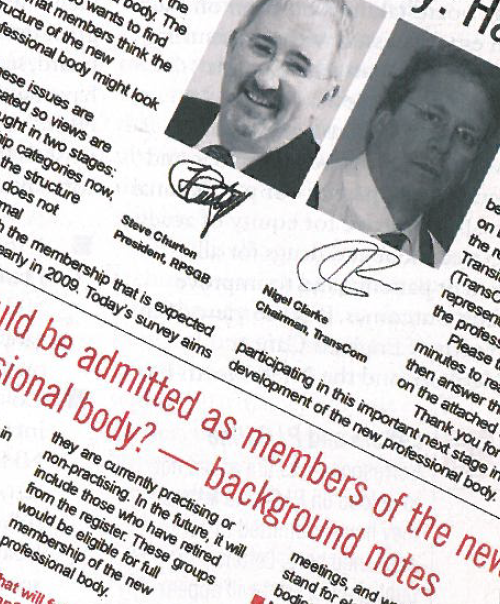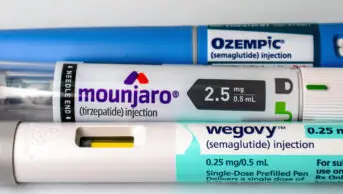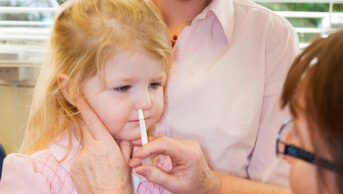
0ur membership survey — “Have your say!” — asked questions about which professions and groups should be asked to join the new professional body. It has been one of the most successful surveys put together by The Pharmaceutical Journal. Conducted on paper and online between 26 July and 26 August, over 4,500 responses were received (roughly two-thirds on paper and a third online), exceeding the 3,500-odd responses received in The Journal’s readership surveys of 2001 and 2004, and only being eclipsed by a survey on continuing professional development conducted on behalf of the education division in 2003 which elicited nearly 8,000 responses.
Since this latest survey was designed for members of the Royal Pharmaceutical Society to complete, a number of responses were excluded from the analysis. So far, 4,058 responses have been analysed, although the data are being further scrutinised and additional information may be forthcoming in the weeks ahead.
Respondents in the older age groups (36-50, 51-65 and over 65) were roughly representative of the Register. Only those in the youngest group were not as well represented: 23 per cent of those who participated in the survey were under the age of 35 compared with an expected 39 per cent of the Register. The analysis was weighted to take account of this lower response rate from this group.
The first question asked “Which professional groups should be invited to join the new professional body?”, and the responses are given in Table 1. Question 2 asked “Which status should these groups be given?”; optional answers were “full membership”, “associate/affiliate membership”, “full membership of own section” and “excluded”. The responses are presented in Table 2.
When comparing the responses to question 1 and question 2, there was a more positive response to offering some status to pharmacy technicians, pharmaceutical scientists and non-pharmacist academics (56 per cent, 53 per cent and 47 per cent, respectively) than simply inviting them to join the professional body (44 per cent, 39 per cent and 34 per cent, respectively).
Question 3 asked “Who should be eligible to stand for election to the governing Council of the new professional body?” and the responses are give in Table 3. In answer to the last substantive question, “Should there be appointed lay members on the governing Council?”, 54 per cent said “yes” and 44 per cent said “no” (2 per cent did not answer the question).
Further analysis will look at the sector of practice, breakdown by sex, practising versus non-practising respondents and those currently registered as overseas pharmacists. In addition, 856 written comments were made and these are also being analysed.
| Group | Percentage of respondents answering “yes” |
| Pharmacists | 98 |
| Non-practising pharmacists | 90 |
| Retired pharmacists | 85 |
| Pharmacy students | 62 |
| Preregistration trainees | 80 |
| Overseas pharmacists | 61 |
| Pharmacy technicians | 44 |
| Non-practising technicians | 21 |
| Retired technicians | 23 |
| Preregistration trainee technicians | 25 |
| Pharmaceutical scientists | 39 |
| Non-pharmacist academics | 34 |
| Others | 12 |
| Group | Percentage of members answering “yes” to these four categories: | |||
| Full membership | Associate/affiliate | Full membership of own section | Excluded | |
| Pharmacists | 99 | 0 | 1 | 0 |
| Non-practising pharmacists | 51 | 37 | 8 | 3 |
| Retired pharmacists | 41 | 41 | 11 | 6 |
| Pharmacy students | 7 | 42 | 29 | 18 |
| Preregistration trainees | 17 | 47 | 26 | 8 |
| Overseas pharmacists | 24 | 35 | 14 | 24 |
| Pharmacy technicians | 12 | 13 | 31 | 41 |
| Non-practising technicians | 3 | 15 | 17 | 62 |
| Retired technicians | 3 | 16 | 17 | 61 |
| Preregistration trainee technicians | 3 | 16 | 19 | 58 |
| Pharmaceutical scientists | 9 | 26 | 17 | 44 |
| Non-pharmacist academics | 4 | 30 | 13 | 49 |
| Others | 1 | 14 | 6 | 75 |
| Group | Percentage of respondents answering “yes” |
| Pharmacists | 100 |
| Non-practising pharmacists | 50 |
| Retired pharmacists | 43 |
| Pharmacy students | 11 |
| Preregistration trainees | 18 |
| Overseas pharmacists | 14 |
| Pharmacy technicians | 31 |
| Non-practising technicians | 6 |
| Retired technicians | 6 |
| Preregistration trainee technicians | 4 |
| Pharmaceutical scientists | 17 |
| Non-pharmacist academics | 13 |
| Others | 5 |


